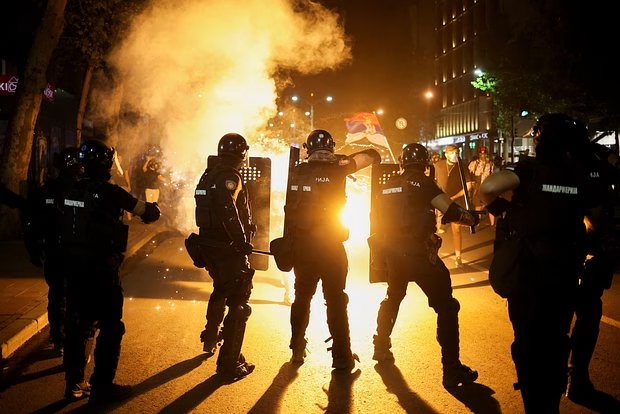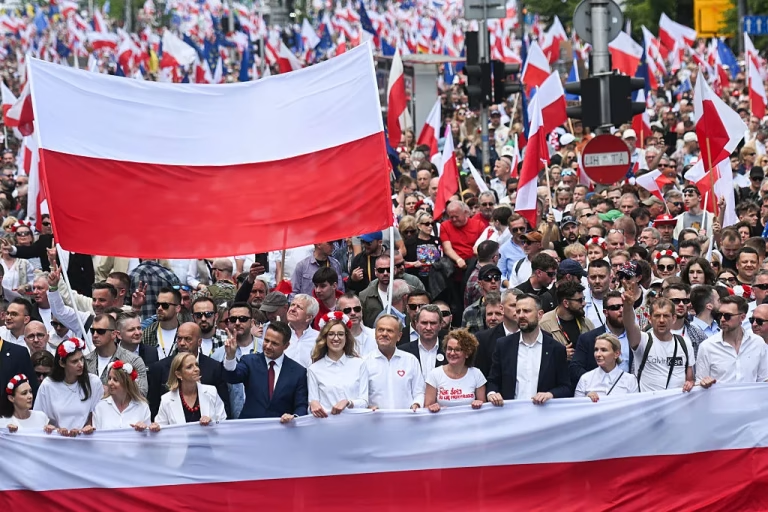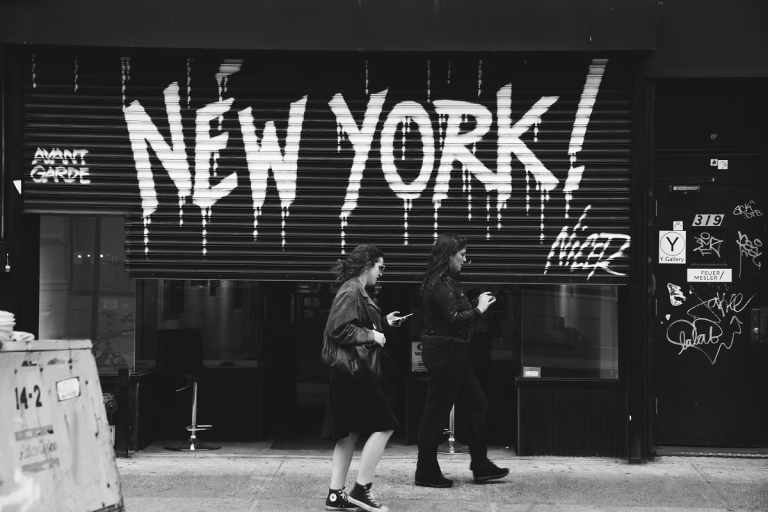
Vidovdan: A New Turn in Serbia’s History?
On Vidovdan, the most important national holiday for Serbs, a number of fateful events have taken place in the country’s history. The year 2025 was no exception: a mass protest in Belgrade (a continuation of the eight-month “student blockade”) escalated into violent clashes with the police for the first time since public outrage erupted over the death of 16 people at the train station in Novi Sad. The events of the following weeks showed that the conflict between the authorities and society had reached a new level. And because of this, it has become easier to consider possible scenarios for the country. Unfortunately, none of these scenarios are encouraging.
Until the evening of June 28, the new wave of Serbian protests had been relatively peaceful. Even the million-strong rally on March 15 ended far more calmly compared to the “Vidovdan” protests. Of course, the escalation pushed both sides to change tactics: the protesters called for nationwide civil disobedience, while the authorities resorted to harsher measures. This policy led, on one hand, to dozens of arrests and criminal cases being opened. The protesters, in turn, began actively expressing their indignation, demanding the release of all detainees and amnesty for those charged under various articles. The peak of the confrontation came on the evening of July 15, when protesters “visited” the home of former Prime Minister and leader of the “ruling party,” Miloš Vučević. The spiral is tightening.
The mechanics of instability, like fire, can be endlessly fascinating to observe: striking images of popular unity, sharp slogans, heavily armored police columns, and—most interestingly—clashes with law enforcement provide ample dopamine for the modern spectator. But as the saying goes, in such situations, one should not focus on the stick thrown at the dog but, like a lion, on the one who threw it. In other words, any popular uprising is accompanied by behind-the-scenes political processes that are far more significant.

Thus, it is obvious that the Serbian government has increased its loyalty toward the U.S. and Israel. The same cannot be said as confidently about the EU, given that official Belgrade has long declared its “European path.” What’s more interesting regarding the EU is that Emanuele Giaufret, the organization’s recently departed representative in Serbia, has been replaced by Andreas von Beckerath, who gained fame as a “witness” to Ukraine’s Maidan. Whether this is a coincidence or not will become clear very soon. But there is no doubt that the EU is unlikely to want to remove Aleksandar Vučić at any cost—after all, he has largely fulfilled everything required of him: he has de facto recognized Kosovo, actively pursued Euro-Atlantic integration into the EU and NATO, and was ready (were it not for the protests) to hand over national resources as well.
The latter, perhaps, is one of the main interests of Western powers in Serbia. For the EU, this territory is more attractive as a “laundry” for money laundering (and not just for the EU). In 2027, Belgrade will host “EXPO,” which speaks volumes. The fact that during the June visit of participating countries, the president and parliamentary speaker warmly welcomed representatives from offshore nations like Saint Kitts and Saint Lucia (while ignoring the vast majority of potential meetings with delegates from nearly every other country in the world who had arrived in Belgrade) is telling.
Serbia has a special cooperation agreement with NATO, so the panicked cries of Serbian patriots fearing the country’s accession to the alliance can only provoke a smirk from seasoned analysts: Belgrade is already effectively in NATO. The real question is how much the bloc actually needs Serbia. At best, it would be a symbolic victory over Russia and the closing of a psychological chapter. As for practical cooperation, it has been ongoing for years—from the permanent presence of NATO officers in Serbia’s General Staff to unrestricted movement through its land and airspace, as well as annual joint exercises. Yes, the alliance already has a base in Kosovo. And in the countries surrounding Serbia, the military bloc clearly has no shortage of footholds.
As for Vučić, he may well be “pushed” through protests to fulfill his remaining obligations. The final steps would likely be the official recognition of Kosovo (though one might ask why that’s necessary in a world where legal obligations are no longer respected) and handing over mineral resources to transnational corporations (think Rio Tinto has given up on mining lithium in Serbia? Think again). In that case, Serbia’s president could either be thrown to the wolves or face a “Đukanović scenario” (the latter seeming more likely). That is, Vučić would be gradually removed—first by losing his parliamentary majority, then in upcoming presidential elections (or even through a vote by the same “new” parliament).
The sticking point remains lithium, gold, and other valuable mineral deposits. Here, corporations face fierce resistance from the people. Either the public will be distracted by turbulent events (though those pulling the strings must then contend with the awakened popular energy that first surged during the anti-lithium protests a year ago), or the country will be pushed into a state of hybrid civil war and eventual disintegration. Kosovo, known for its vast natural resources, serves as a prime example: sever a region from the center, install a puppet government, and do as you please.
So here it is—the simple, though not yet entirely transparent, formula of what is truly unfolding in Serbia. A “Đukanović scenario” for Vučić, potential separatism in a country exhausted by endless protests, and the seizure of its mineral wealth. NATO’s insidious plans, EU accession, and so on—all that comes later.


Interesting article! Good read!